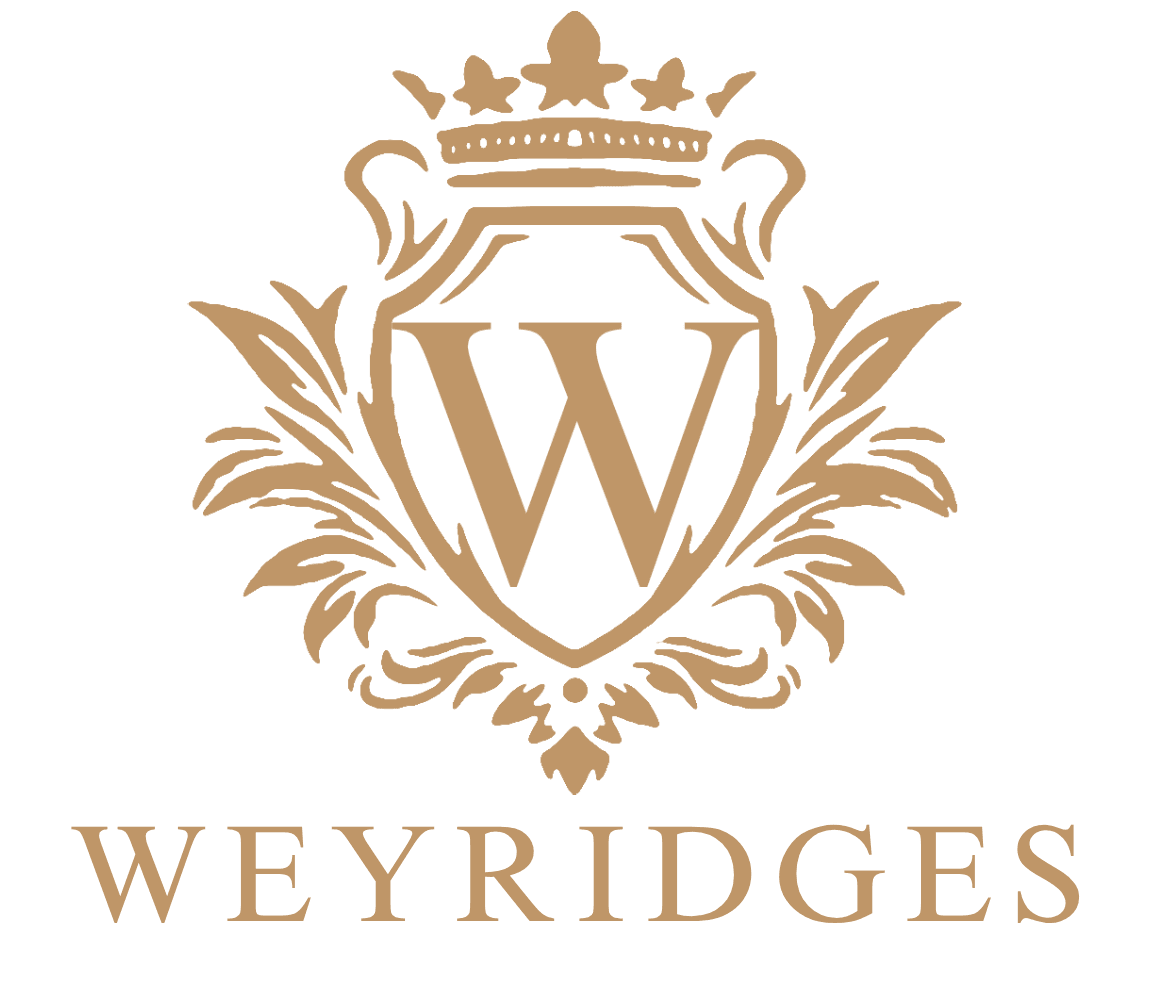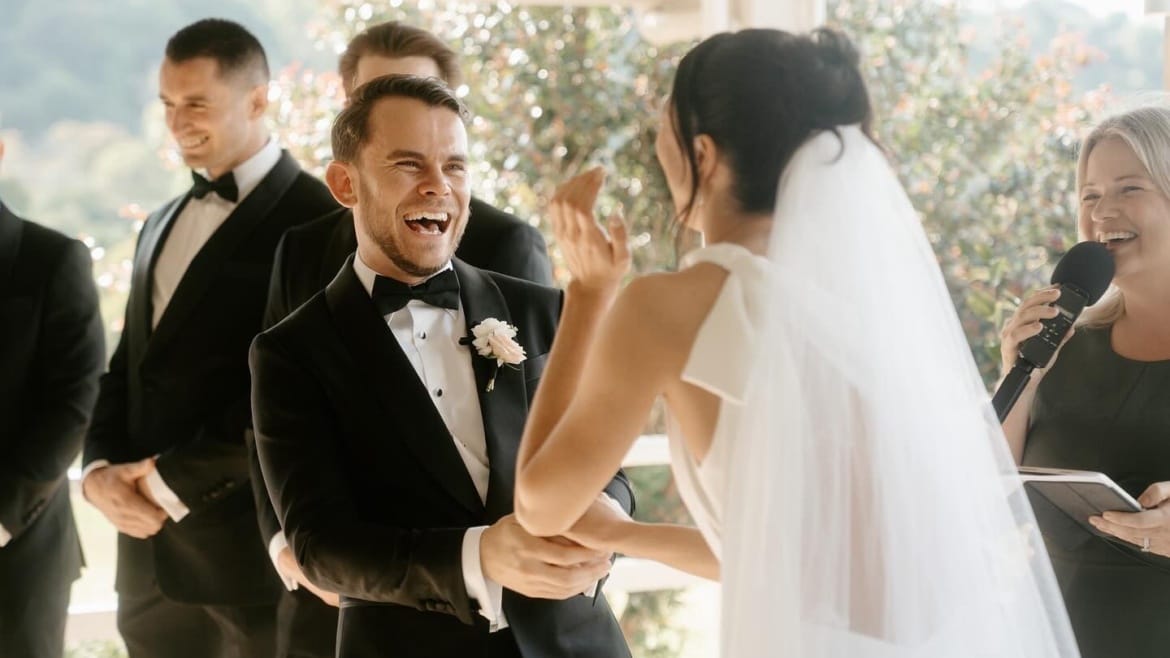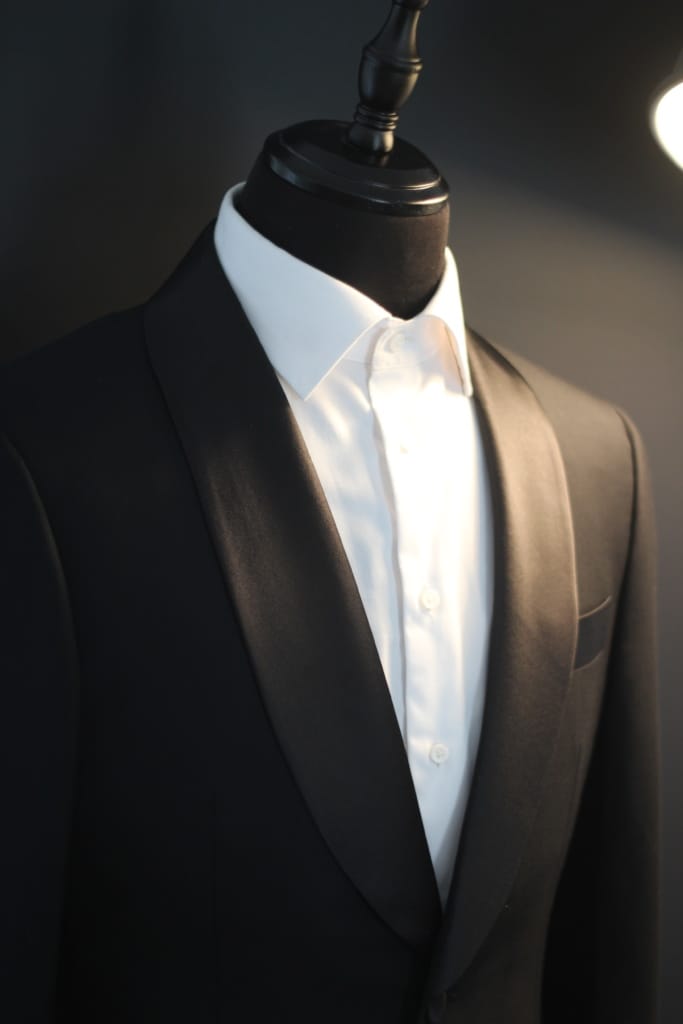
A Weyridges classic black tuxedo is a timeless classic, perfect for formal events such as weddings, galas, and black tie affairs. Characterised by its sleek black jacket, matching tailored trousers and often paired with a crisp white dress shirt. Black stud buttons or black buttons are a nice touch. Traditional details include satin lapels, bow tie, cufflinks and polished or patent black shoes.
The clean lines and sharp tailoring of a custom made suit create a flattering silhouette, making it a go to choice for those looking to make a polished, yet understated, statement at any formal occasion.
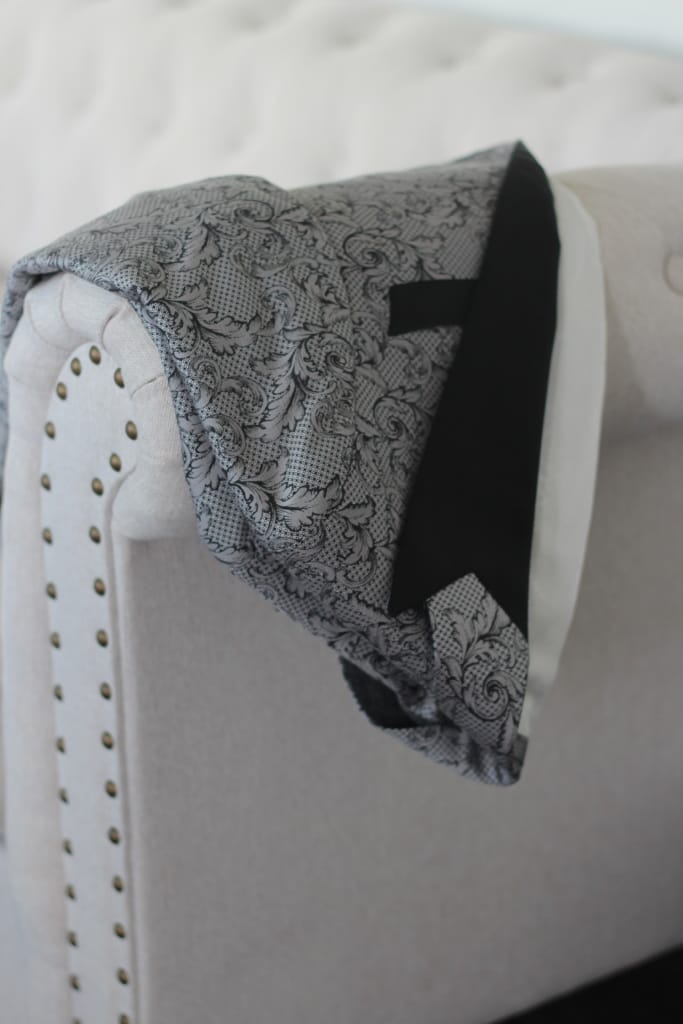
The trending modern Tuxedo, times have changed and the classic Tuxedo has evolved into the 21st century. With the use of patterns and jaquard textiles. Tuxedo lapels, often made of satin, with common styles including peak, shawl, and notch lapels each offering a distinct look. Add your personal touch to your Tuxedo by adding your own monogram or even a custom photo printed lining. With this look you could wear the jacket in less formal setting with smart chinos or pant. See also our Spring/Summer post. Classic black suits are still suitable for business.
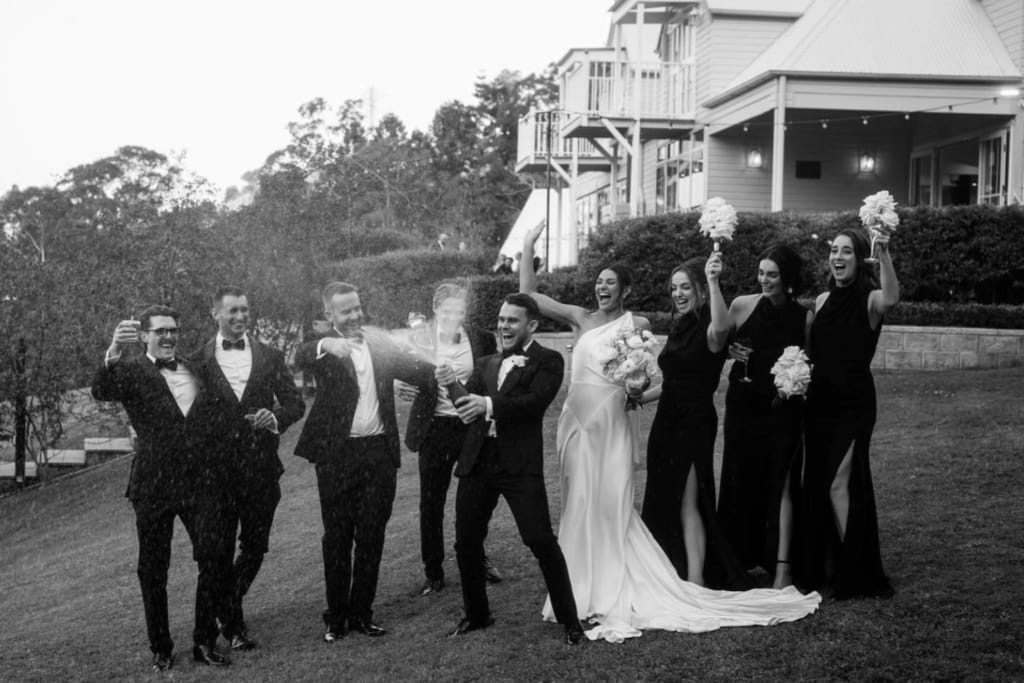
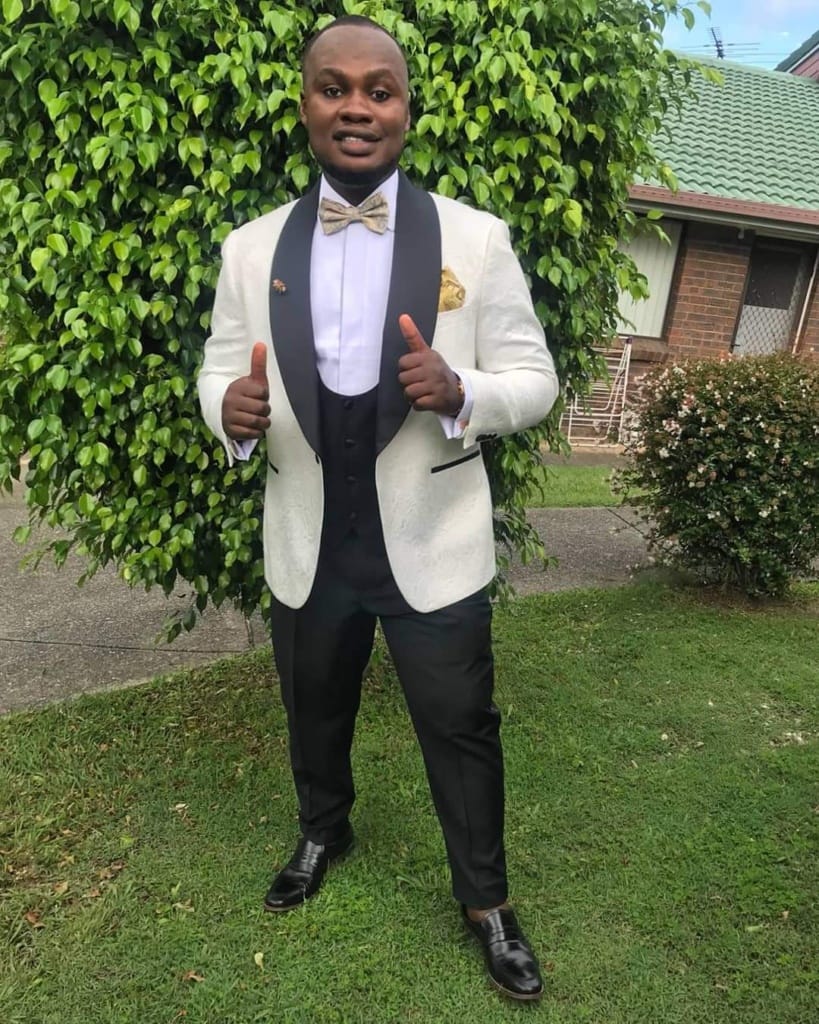
A Jacket with jacquard fabric in the opposite colour to the pants is a modern take on formal wear. The jacquard pattern with satin black shawl lapel is a good contrast to the plain black trousers.
Create your custom made suit wedding suit across Brisbane, Gold Coast & Tweed and Sunshine Coast. Book a fitting with one of our travelling Stylists and have your garment personally delivered.
Origins in 19th Century Britain
The story of the tuxedo begins in the 19th century in Victorian England. During this period, men’s fashion was deeply rooted in formality. The traditional eveningwear was the tailcoat, worn with a white waistcoat and cravat. However, by the 1860s, attitudes towards formal dressing began to shift. As social events became less rigid and more recreational, there was a growing need for a more relaxed, yet still respectable, alternative to the tailcoat.
The breakthrough came when the Prince of Wales (later King Edward VII) commissioned a short black evening jacket without tails. He asked his tailor, Henry Poole & Co. of Savile Row, to create something suitable for informal dinner parties. This new garment was sleeker, more comfortable, and still retained an air of sophistication. It was known as the dinner jacket.
The Tuxedo Crosses the Atlantic
The dinner jacket remained a British phenomenon until the late 19th century. Its leap to international fame occurred thanks to an American named James Brown Potter. In 1886, Potter visited England and was introduced to the Prince of Wales, who encouraged him to adopt the new style of eveningwear. Potter brought the dinner jacket back to the United States and debuted it at a high-society event at the Tuxedo Park Club, an elite enclave in New York State.
The unconventional style caused a stir among the traditionalists at the club. Nonetheless, it caught on with the fashion-forward elite, and soon, the dinner jacket became associated with the club itself. Americans began referring to the garment as a “tuxedo,” a name that stuck and spread across the country.
Rise in Popularity
By the early 20th century, the tuxedo had firmly established itself as the standard for black-tie attire in the United States. It replaced the tailcoat for most formal occasions and evolved into a symbol of modern masculinity and class.
The 1930s and 1940s saw Hollywood stars like Fred Astaire, Cary Grant, and Humphrey Bogart wearing tuxedos on and off-screen, further popularizing the look. These icons helped the tuxedo become a symbol not just of formality, but of charisma, charm, and sophistication.
Evolution Through the Decades
Like all fashion, the tuxedo has undergone stylistic changes. In the 1950s, the shawl collar became a popular alternative to the traditional peak lapel. The 1960s brought slimmer fits and midnight blue alternatives. The 1970s, ever bold, experimented with colorful tuxedos and wide lapels.
Despite these changes, the essence of the tuxedo has remained consistent: satin lapels, matching trousers with a satin stripe, and typically paired with a crisp white shirt, black bow tie, and patent leather shoes.
